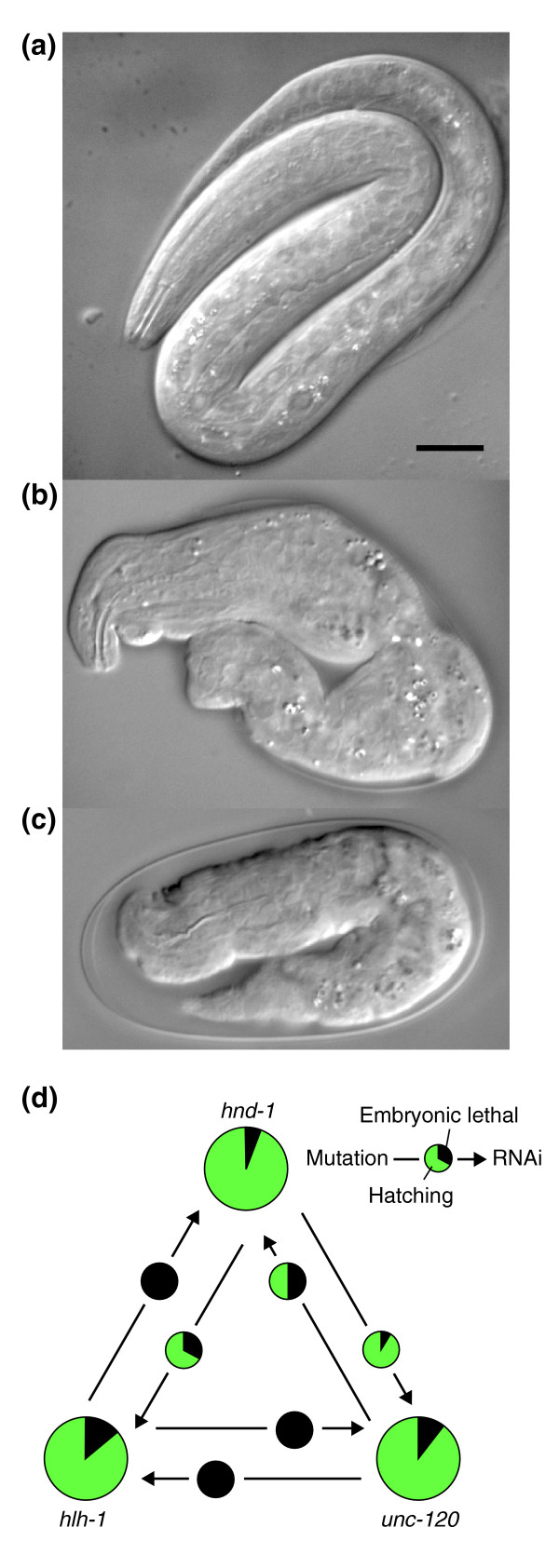Figure 3.

Modular genetic interactions between three transcription factors controlling differentiation of muscle. A recently hatched L1 larva is shown for (a) wild type and (b) hlh-1(cc561), and (c) an arrested Pat embryo is shown for hlh-1(cc561); unc-120(RNAi). The scale bar in (a) equals 10 μm and applies to (a-c). Mutation of hlh-1, hnd-1 or unc-120 alone results in dumpy, uncoordinated larvae and Pat embryos (as in (b) and (c)) at low frequency. Disruption of function of any two of these three genes by mutation and RNAi significantly elevates both frequencies so that in the most potent combinations 100% Pat embryos result. The Pat phenotype has been shown to result specifically from the disruption of muscle differentiation and function [26,27]. (d) A summary of the proportion hatching (green) and proportion arresting as Pat embryos (black) for each single mutant and each of the six genetic interactions tested.
